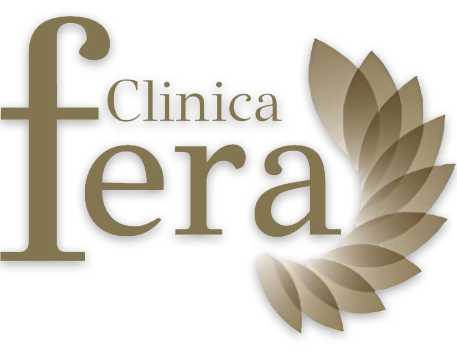What Exactly Is
Fue Hair Transplant?
FUE hair transplant is a minimally invasive surgical procedure that involves extracting individual hair follicles from a donor area, typically the back of the scalp, and implanting them into areas with thinning or balding hair. Unlike traditional hair transplant techniques that require a linear incision and strip of scalp removal, FUE utilizes a punch tool to extract follicular units one by one, leaving minimal scarring and enabling a more natural-looking outcome.
Advantages of FUE Hair Transplant
FUE hair transplant offers several advantages over other hair restoration techniques:
- Minimal scarring: Since FUE involves extracting individual follicles, it leaves tiny, circular scars that are hardly noticeable, making it ideal for individuals who prefer shorter hairstyles.
- Natural-looking results: The precise extraction and transplantation of follicles allow for a more natural appearance, mimicking the hair’s original growth pattern and direction.
- Faster recovery time: FUE is a less invasive procedure compared to other hair transplantation methods, resulting in a quicker recovery and reduced downtime.
- Versatility: FUE can be used to restore hair on various areas of the body, including the scalp, eyebrows, beard, and chest.
The FUE Hair Transplant Procedure
Before undergoing an FUE hair transplant, a thorough consultation with a qualified hair transplant surgeon is essential. During the procedure:
- Donor area preparation: The donor area is trimmed, and the patient receives local anesthesia to ensure comfort throughout the procedure.
- Follicle extraction: Using a specialized punch tool, individual follicular units are extracted from the donor area. The surgeon carefully selects and extracts the healthiest follicles to maximize graft survival.
- Recipient area creation: Tiny incisions are made in the recipient area, where the extracted follicles will be implanted. The surgeon takes into account the natural hairline and aesthetic considerations.
- Follicle implantation: The extracted follicular units are meticulously placed into the recipient area, ensuring proper depth, angle, and spacing for optimal growth.
Preparing for FUE Hair Transplant
To ensure the best possible outcome, it’s crucial to follow pre-operative instructions provided by your hair transplant surgeon. These may include:
- Avoiding blood-thinning medications or supplements that can increase the risk of bleeding.
- Quitting smoking, as it can impair healing and negatively affect the success of the procedure.
- Informing your surgeon about any pre-existing medical conditions or allergies.
Step-by-Step Guide to FUE Hair Transplant
- Consultation and assessment: You’ll have an initial consultation where the surgeon will evaluate your hair loss pattern, donor area, and discuss your goals and expectations.
- Pre-operative instructions: The surgeon will provide specific guidelines to follow before the procedure, such as avoiding alcohol consumption or fasting.
- Procedure day: On the day of the procedure, you’ll arrive at the clinic, and the surgeon will reconfirm the treatment plan and answer any last-minute questions.
- Anesthesia: Local anesthesia will be administered to the donor and recipient areas to ensure a painless experience.
- Follicle extraction: The surgeon will use a punch tool to extract individual follicles from the donor area. This process is meticulous and time-consuming to ensure the best quality grafts.
- Recipient area creation: Tiny incisions will be made in the recipient area, considering the natural hairline and desired outcome.
- Follicle implantation: The extracted follicles will be carefully placed into the recipient area, following the pre-determined pattern and density.
- Post-operative instructions: The surgeon will provide detailed instructions on how to care for the transplanted area, medications to take, and what to expect during the recovery period.
Recovery and Aftercare
After the FUE hair transplant procedure, proper care and adherence to post-operative instructions are crucial for optimal healing and hair growth. Here are some key points to keep in mind:
- Avoid touching or scratching the transplanted area to prevent dislodging grafts.
- Follow the prescribed medication regimen, including pain relief and antibiotics, as instructed by your surgeon.
- Protect the transplanted area from direct sunlight and avoid strenuous activities that can increase sweating or lead to trauma.
Results and Expectations
While individual results may vary, most patients start seeing new hair growth within a few months after an FUE hair transplant. The transplanted hair will shed initially but will then regrow naturally. It’s important to set realistic expectations and understand that full results may take several months to a year.
Choosing the Right FUE Hair Transplant Clinic
Selecting a reputable and experienced hair transplant clinic is vital for a successful FUE hair transplant. Consider the following factors when choosing a clinic:
- Surgeon qualifications and experience in performing FUE procedures.
- Positive patient reviews and before-and-after photos.
- The clinic’s adherence to safety protocols and hygiene standards.
- Transparency in providing detailed information about the procedure, costs, and expected outcomes.
Cost of FUE Hair Transplant
The cost of an FUE hair transplant can vary depending on various factors, including the extent of hair loss, the number of grafts required, and the geographic location of the clinic. It’s important to schedule a consultation to receive an accurate cost estimate tailored to your specific needs.
FUE Hair Transplant vs. Other Hair Restoration Techniques
FUE hair transplant is just one of several hair restoration techniques available. Here’s a brief comparison between FUE and other commonly used methods:
- FUE vs. FUT (Strip) hair transplant: FUE does not involve the removal of a strip of scalp, resulting in minimal scarring and a faster recovery time compared to the FUT technique.
- FUE vs. robotic hair transplant: Robotic hair transplant utilizes an automated system for graft extraction, but it still requires a skilled surgeon for precise implantation. FUE allows for more manual control and customization.
- FUE vs. non-surgical hair restoration: Non-surgical options like medications or low-level laser therapy may be suitable for mild to moderate hair loss but may not provide the same permanent results as FUE hair transplant.
Ultimately, the choice of technique depends on individual factors, and consulting with a hair transplant specialist can help determine the most suitable approach.
Conclusion
FUE hair transplant is a highly effective and minimally invasive procedure for restoring hair and addressing hair loss. With its numerous advantages, including minimal scarring, natural-looking results, and faster recovery, FUE has become a preferred choice for individuals seeking a permanent solution to hair loss. By understanding the procedure, recovery process, potential risks, and selecting a reputable clinic, you can embark on your hair restoration journey with confidence.
Yes, FUE hair transplant can be performed on both men and women experiencing hair loss or thinning.
Yes, the transplanted hair is carefully placed to mimic the natural growth pattern, ensuring a natural-looking outcome.
The initial recovery period is typically around one to two weeks, but complete healing and hair growth may take several months.
Yes, the transplanted hair follicles are genetically resistant to hair loss and will continue to grow naturally for a lifetime.
Get In Touch With Us
book@clinicafera.com
Book An Appointment
Book a free consultation to ClinicaFera, simply fill out the form below and we will contact you back regarding the intervention you require.

